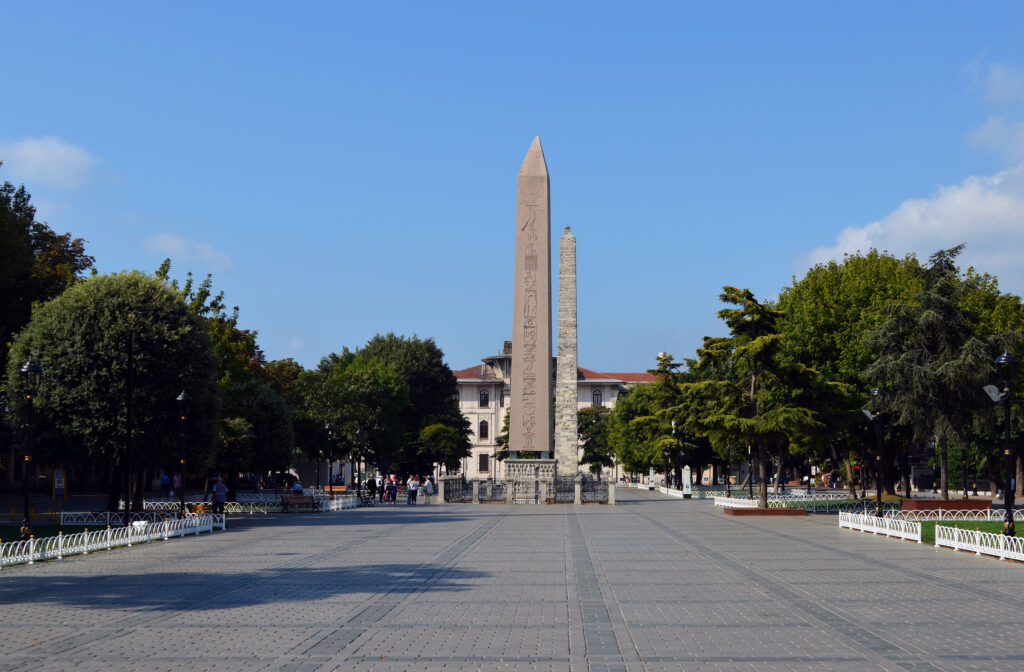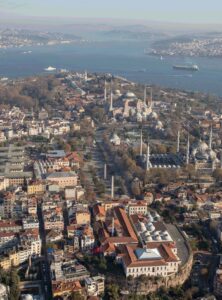The Hippodrome of Istanbul is one of the most iconic landmarks in the city and has been of great significance to the city for centuries. Built initially in 203 AD, the Hippodrome has served as an important center for various ceremonies, races, and political events. The Hippodrome was initially created by the Eastern Roman Emperor Septimius Severus and its primary purpose was to hold chariot races. As Rome expanded their influence, they brought the sport of chariot racing along with them. Over the centuries, the Hippodrome has been remodeled several times, including by the Eastern Roman Emperor Constantine the Great in the 4th century. It has also served as a hub of political activity throughout its history.
The Hippodrome is located in the heart of the city, and its oval shape is almost two thousand meters long and four hundred meters wide. It is surrounded by a monumental wall thirty meters high and laid out in a simple but beautiful design. The heart of the hippodrome is the spina, which is a long, wide strip that runs through the center. Three obelisks stand in the middle of the spina, the first of which is the Obelisk of Emperor Theodosius. On each side are smaller statues, including a bronze statue of four horses, known as the Quadriga of Anthemius.

The first recorded chariot race at the Hippodrome of Istanbul took place in 203 AD, and it was said to have been attended by thousands of people. The races that took place at the Hippodrome of Istanbul included four teams: the Reds, Blues, Greens and Yellows. These teams were identified by the colours of the uniforms worn by their charioteers. Each team also had their own supporters and areas within the Hippodrome. Races continued to take place at the Hippodrome until the Ottoman Sultan ‘in Topkapi Palace‘ known as Mahmud II abolished the teams in 1833.
Throughout its long history, the Hippodrome of Istanbul has also hosted political events. In 354 AD, for example, the Eastern Roman Emperor Constantius II held a speech at the hippodrome. During his speech, he declared his loyalty to Christianity as the official religion of the Roman Empire. In 548 AD, the current Eastern

Roman Emperor Justinian held a speech at the Hippodrome known as the Nika Riot in order to calm a revolt taking place against him. The Hippodrome has followed some political turmoil over the centuries, and the most recent example of this was the Gezi Park Protests in 2013, where it was used as an important rally site.
Today the Hippodrome is a popular tourist destination, visited by thousands of people each year. While the chariot races no longer happen, the Hippodrome is still used for public events and ceremonies, with the occasional public rally taking place. It’s importance to the city’s culture and history is as strong as ever, and it continues to be a significant landmark for the city and its inhabitants.

The payment is encrypted and transmitted securely with an SSL protocol.

Copyright 2023 Discover Turkey Tours | All rights reserved.

5 Comments
Relaxing on a Bosphorus cruise while taking in the magnificent views of Istanbul was priceless.
Sampling Turkish street food like lamb kebabs and stuffed mussels was a culinary adventure.
The Aya Irini Church’s tranquility amidst the bustling city was a serene surprise.
The Princes’ Islands are a serene escape from the city, where horse-drawn carriages replace cars.
Exploring the historic streets of Sultanahmet and immersing ourselves in local culture was a highlight of our trip.